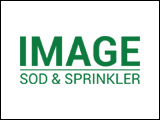The manager of industry and policy analysis with Sask Pork says the ability to track the movement of infectious diseases such as Porcine Epidemic Diarrhea is demonstrating the value of Canada’s new swine traceability system.
Under new regulations that took effect July 1 to accommodate swine traceability, both the shipper and the receiver of live hogs must report where those hogs were moved from and to, the date they were moved, how many were moved and the license plate number of the vehicle that moved them to the PigTrace Canada database within seven days and all hogs moved to slaughter must be identified with an ear tag or a slap tattoo.
Mark Ferguson, the manager of industry and policy analysis with the Saskatchewan Pork Development Board, says in general the transition to mandatory reporting has been smooth.
It was over ten years ago when we started to develop a traceability system.
We had a pilot project and we did a lot of things to try to determine the right way to trace hogs.
The main reason we do it is for disease and different little bugs that can affect the swine herd and we wanted the ability to be able to very quickly track down the source of any type of infection and how it may have spread and to be able to do that very very quickly.
This system gives us the opportunity to do that and I think, when we have something like the PED outbreak that is in North America right now this kind of system is going to prove its value and will be able to isolate and determine how that disease spreads very quickly if it does become a problem.
Ferguson says reporting movements is a simple process and most farms are using electronic methods to submit their data into the PigTrace system.
He encourages anyone with questions to contact their provincial pork organization.



